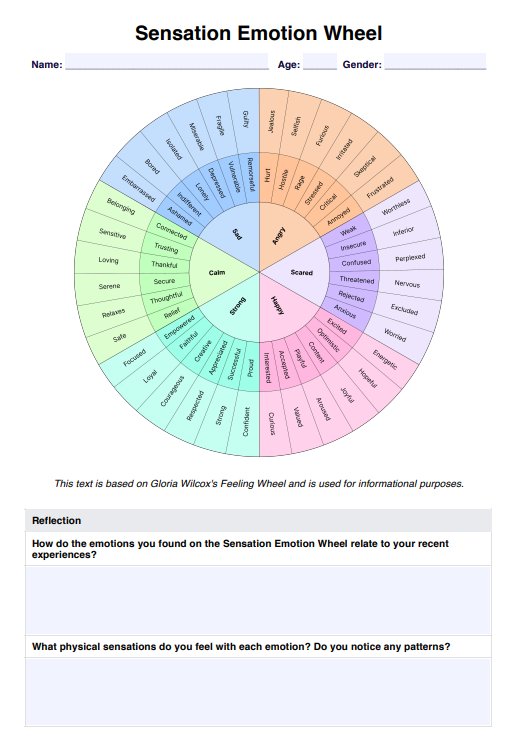A feeling wheel is a powerful tool that acts as a visual translator for emotions. It typically consists of concentric circles, with primary emotions at the center and secondary emotions expanding outward. To read a feeling wheel, start from the center and work outwards. Primary emotions are at the core, while secondary emotions extend outward.

Sensation Emotion Wheel
Learn how to use the Sensation Emotion Wheel effectively to promote mental health and emotional well-being.
Sensation Emotion Wheel Template
Commonly asked questions
Completing a feeling wheel involves identifying and pinpointing your current emotional state on the wheel. Start by considering how your body feels and recognizing the emotions you're experiencing.
The eight primary emotions include joy, sadness, trust, disgust, fear, anger, surprise, and anticipation. These emotions serve as foundational categories encompassing a wide range of feelings and experiences. Understanding the eight types of emotions provides a framework for navigating our emotional lives and connecting with others on a deeper level.
EHR and practice management software
Get started for free
*No credit card required
Free
$0/usd
Unlimited clients
Telehealth
1GB of storage
Client portal text
Automated billing and online payments











